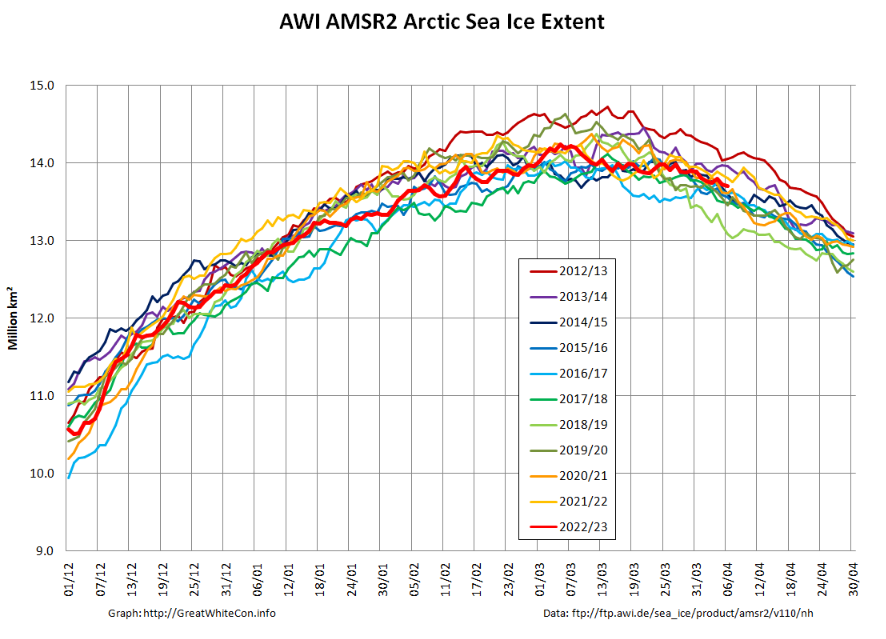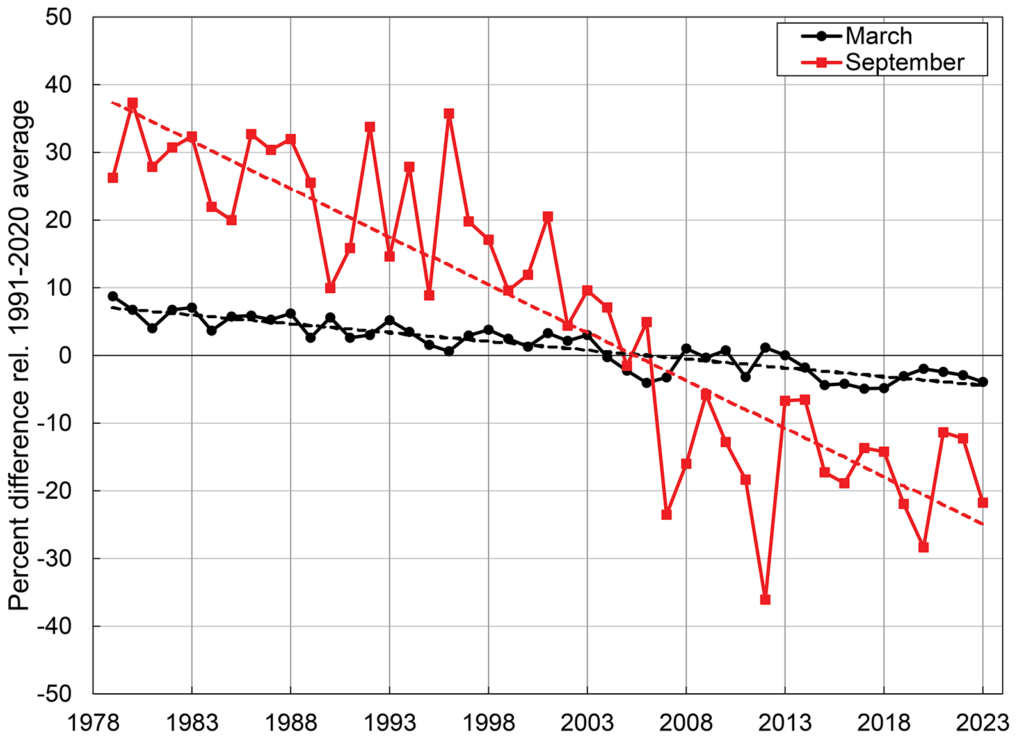The Arctic has become a hotbed of power struggles. The increase in the military presence of the great powers further complicated the region. In in addition, the war in Ukraine has made Arctic countries increasingly worried and looking for means of Defense to strengthen security. This means that the air defense and missile defense system will continue to be improved to ensure deterrence and security for all countries.
Interoperability of air and missile defense elements and assets will be the main goal of Arctic countries to make their defense capabilities more credible. However, each country in the region focuses its independent defense capabilities through denial capabilities in order to operate under sovereign defense orders and mechanisms.

Global powers vying for power in the region continue to pay attention to the complexity of their defense capabilities strengthening deterrence. Strong competition for power in the region leads to a complex but strongest chain of air and missile defense networks. As the attack on the area becomes more powerful, the defense system is more advanced and deadly.
NATO’s defensive role for Arctic
NATO has a responsibility to protect its European populations, territory and forces from growing threats. One such threat is the proliferation of ballistic missiles. To solve this type of threat, NATO has a permanent mission called NATO Ballistic Missile Defense (NATO BMD). NATO Ballistic Missile Defense is a component of NATO’s Integrated Air and Missile Defense (NATO IAMD) architecture.
Several NATO allies (Poland, Spain and Turkey) have already offered their contribution or are developing or acquiring additional BMD assets, such as upgraded ships with BMD-compatible radars, air defense systems and ground-based missiles or advanced detection capabilities, provided by the Allies.
In response to Russia’s war against Ukraine, NATO Allies have deployed additional IAMD capabilities to NATO’s eastern flank, demonstrating the solidarity and resolve of Allies. Therefore, NATO’s new Arctic members Finland and Sweden can play a crucial role in NATO’s IAMD architecture in the near future.
The historic membership of Finland and Sweden makes these countries safer and our Alliance stronger, including in the High North and the Baltic Sea. Every nation has the right to choose its own security arrangements.
Make full use of Finland and Sweden’s membership and the capabilities they bring to the Alliance by fully integrating them into our plans, forces and command structures, including by developing a NATO presence in Finland.
Finland’s world-class military concept, whole-nation defense concept, unique geographical location and strong commitment to shared democratic values make Finland a strong and stable NATO ally capable of defending its 1,340 km border with Russia and making a strong contribution to NATO’s 360-degree E security approach.
As a NATO member, Finland must decide whether it will voluntarily contribute to the alliance’s BMD. The new high-altitude capability could be earmarked for NATO’s missile defense. In addition, the F-35, with its advanced sensors, can also be used to support cruise and ballistic missile defense as part of NATO’s integrated air and missile defense.
In 2023, Finland is said to have made progress with the long-range air defense system, the American-Israeli David Sling system. The Israeli defense systems have a Link 16 communication protocol that makes their defense system compatible with NATO defense systems.
The Swedish Armed Forces in 2021 introduced the new Patriot system, also known as Air Defense System 103 or LvS 103. The system reached its initial operational capability (IOC) by December 2021, meaning it could now be put into service. According to the Swedish Defense Minister, the LvS 103 will allow the Swedish Armed Forces “to withstand long-range missiles and air attacks and we will also be able to fight ballistic missiles.”
Arms Control to Enhance Stability
Bilateral cooperation in nuclear arms control has emerged from the growing destabilization created by this competition. Strategic arms control and strategic defenses have sought to restore a balance to deter both countries from threatening a disintegrating first strike. Arms control negotiations, such as the Strategic Arms Limitation Talks (SALT I), led to the 1972 Anti-Ballistic Missile (ABM) Treaty to limit ballistic missile defenses and the 1987 Intermediate-Range Nuclear Forces (INF) Treaty to limit the deployment of ballistic missiles. nuclear forces in the medium term.
A series of modern negotiations have led to the Strategic Arms Reduction Agreements (START), the latest of which is New START in 2010, renewed in February 2021 for five years. Arms control enhances strategic stability and mutual cooperation by building trust through transparency, predictability, and verification mechanisms (such as inspections) for compliance.
The United States withdrew from the ABM Treaty in 2002 to build a national missile defense and began to renew the nuclear triad.
Currently, the 2010 New START is the last arms control treaty, which expires in 2026. But in 2023, the other side suspended its participation in New START but committed to its restrictions. As a result, it began producing land-based intermediate-range missiles, which are banned by the now-defunct INF Treaty. The 1987 treaty banned missiles with a range of 500 to 5,500 kilometers (310 to 3,410 miles). This was in response to the planned deployment of American intermediate-range missiles in Germany and other countries.
The end of arms control and other cooperative regimes such as open skies reintroduce the distrust, fear, uncertainty and unpredictability that fuel destabilizing arms races. Arctic stability could be affected by these developments, although their impact on the broader framework for cooperation (reinforced by the Arctic Council and the UN Convention on the Law of the Sea) on non-military issues related to the Arctic region remains uncertain.
But missile defense in general is also at the core of NATO’s Ballistic Missile Defense (NATO BMD) mission in the Arctic. Therefore, within the framework of NATO’s BMD operations, NATO’s new Arctic members Finland and Sweden can provide additional BMD assets such as nuclear missiles for proactive defense.
On the one hand, this is a necessary step. But on the other hand, the deployment of American medium-range missiles with nuclear warheads in the Arctic, NATO members such as Finland, Sweden and Norway, will simply destroy these countries and the people living there in the event of a preemptive attack or retaliation by the enemy. It will be a scorched earth for many centuries, in other words “Arctic Chernobyl”. But is it really necessary to sacrifice entire nations in the modern world? However, there is an alternative solution to prevent this from happening.
Arctica as a new Nuclear-Weapon-Free Zone
There are currently five nuclear-weapon-free zone treaties. They are: Antarctica (1959), Latin America (1967), the South Pacific (1985), Southeast Asia (1995) and Africa (1996). This means that countries are not allowed to acquire, test, deploy or develop nuclear weapons in more than a hundred countries, including the entire southern hemisphere.
The Arctic is also a prime candidate for a NWFZ because – like UNCLOS – there are agreements covering non-proliferation issues in the Arctic, including the Seabed Convention and the Non-Proliferation Treaty, although neither is comprehensive enough to adequately address nuclear issues. The Seabed Convention (1971) requires that parties to the convention (i.e. all Arctic states) not place nuclear weapons on the seabed, ocean floor, or subsoil, or in facilities designed for the storage, testing, or use of nuclear weapons. Moreover, Article VII of the Nuclear Non-Proliferation Treaty requires Arctic states (again because they are all states parties) to conclude regional treaties to “ensure the total absence of nuclear weapons in their territories.” The fact that the states in the region were able to agree to these non-proliferation efforts is a positive starting point for negotiations on a NWFZ treaty. The fact that there is already a fairly robust legal framework governing activities in the Arctic means that there is a positive basis on which to build the NWFZ Convention. However, these agreements are neither broad enough nor specific enough to address the unique security challenges of the Arctic.
The Antarctic Treaty should be considered a starting point for negotiations on a nuclear-weapon-free Arctic, as geography and climate create similarities between the two, and there is significant overlap between key players in both areas. The Antarctic Treaty refers to an area without a permanent human population, while the other treaties refer to heavily populated areas. However, the Arctic region presents a mix of both. Furthermore, the Arctic is mostly ocean, while the other treaties refer primarily to land. Therefore, an innovative approach that takes into account best practices and lessons learned from existing treaties is what is needed to conclude a treaty designating the Arctic as a NWFZ.
How to access it, see details in Thomas S. Axworthy’s article “Proposal for an Arctic Nuclear-Weapon-Free Zone”




